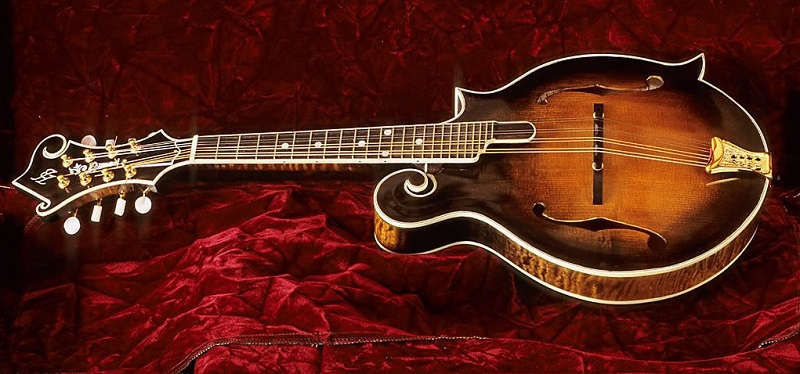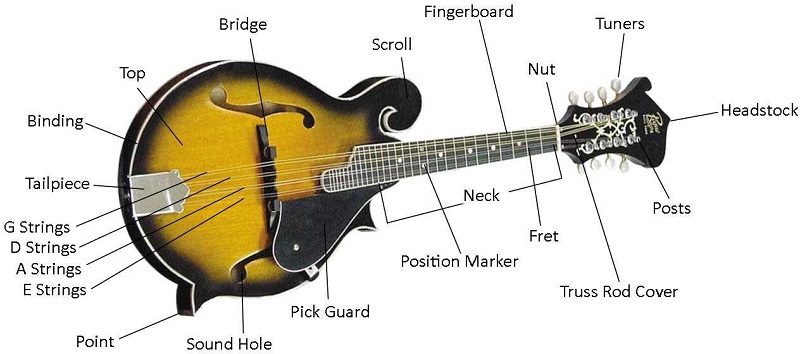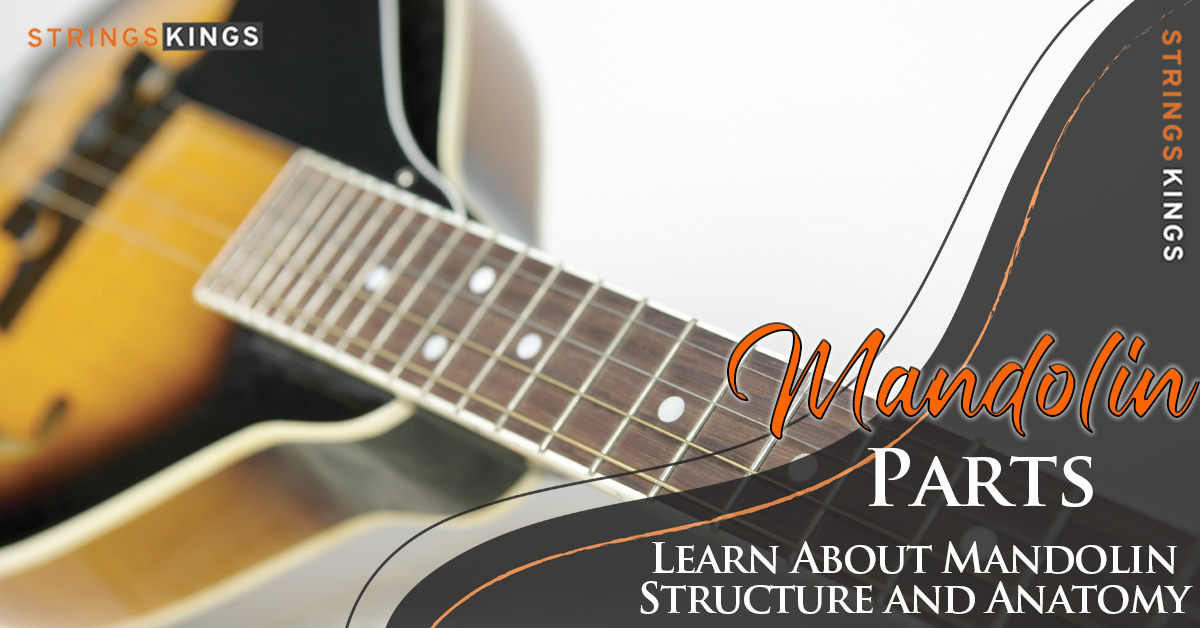Table of Contents
What Is A Mandolin?
Introduction
You may have noticed someone playing a tiny guitar when watching a country music band perform live. In fact, the instrument in question is a mandolin. An instrument belonging to the lute family, the mandolin is a musical instrument.
In general, four courses of doubled metal strings are used, for a total of eight strings, and they are tuned to one another. Even though there are many types of mandolin, only three are commonly found: the roundback mandolin, the carved-top mandolin, and the flatback mandolin.
There is a deep bottom on the round back, whereas the carved top has a shallower, arched back and top. Similar to an acoustic guitar, the flat-backed mandolin has a flat back. Various types of mandolins produce different sounds and are associated with different types of music.
Most folk and bluegrass music uses carved-top mandolins, while British, Irish, and Brazilian folk music uses flat-backed instruments. European classical music is predominantly characterized by the use of round-backed mandolins. As can be seen, the mandolin has been incorporated into a variety of genres and cultures throughout history. Because it is an old instrument, it exhibits this characteristic.

Brief History on Mandolins
Mandolins are small, short-necked lutes with eight strings. This instrument produces sound by vibrating its strings, which makes it a chordophone. Mandolins are descendants of the lute, which date back to some of the earliest instruments used in music.
There are beautiful cave paintings deep within the grottos of France that date from 15,000 BC to 8500 BC. There is one painting depicting a man playing a simple one-stringed instrument with a bow.
Music bows are among the earliest stringed instruments that have been invented by man. A string was plucked with the fingers, and later a stick was used to tap the string. As soon as the bow was held in the mouth, the volume was increased. A resonator was later added to a bow by attaching gourds.
In Mesopotamia, chordophones similar to lutes were invented as early as 2000 BC. There were no frets on these early instruments. In order to change the pitch, the strings were pressed against the instrument’s neck. Rather than using the fingers, hard objects or plectrums were sometimes used to pluck the strings, because they produced a louder and sharper sound than the fingers.

During the seventh century AD, a folk lute known as the oud was in use. Near Eastern music, especially that of Armenia and Egypt, is still performed with the oud today, virtually unchanged. ‘Oud’ is the Arabic word for wood, and a wooden lute is known as an oud. Spain acquired the oud during the Moorish conquest (711-1492), Venice acquired it through coastal trade, and Europe obtained it from returning Crusaders (ca. 1099).
One of the paintings by Agnelo Gaddi (1369-1396) in a Washington gallery depicts an angel playing a miniature lute known as the mandora. An ensemble of 16th-century lutes would have been incomplete without the miniature lute. Pandura, which describes its shape, is the name given to this instrument by the Assyrians. Dambura was the Arabic name, Mandora was the Latin name, and Mandola was the Italian name. Italians called the smaller version of the traditional mandola the mandolina.

As a result of substantial immigration from eastern and southern Europe, the mandolin entered the mainstream of popular American culture during a period of prosperity and vulgarity in which exotic and foreign instruments were in vogue.
A zither, mandola, ukulele, and other novelties designed to entertain the increasingly leisured middle class were in vogue during the 1850s. The Neopolitan bowl-backed instrument gained popularity in the 1880s as a result of an increase in Italian immigration. Edison recorded the mandolin as one of the first instruments on cylinders. As Montgomery Ward’s catalog noted in 1897, the mandolin trade was experiencing phenomenal growth.
Mandolin: Sound and Genres
The sound of the mandolin is unique. In addition to having a unique sound, it also has a melancholy undertone. Bluegrass and folk music often feature this instrument, but it is an instrument that can be found in all genres of music. Mandolins are stringed instruments played with a pick. The sound is bright and ringing and can be easily heard through a mix.
In addition to being used as lead instruments, mandolins can also be used as rhythm instruments. The music of the mandolin is often characterized by a great deal of space and dynamics. A very soft or very loud tone can be produced by the instrument.
As a result, the music has a great deal of emotion and feeling. Mandolins are extremely versatile instruments. It can be used for a variety of musical genres. You should definitely give mandolin music a try if you are looking for something different.
In spite of its less widespread popularity, the mandolin remains an important part of many musicians’ sound. Apart from providing a distinctive sound, the mandolin and guitar differ in terms of their volume. Similar to the tuning of a violin, the GDAE tuning is used on a mandolin.

Types of Mandolins
Initially, when comparing mandolins, the shape of the sound hole will be the most obvious difference between models. Although sound holes come in a variety of shapes and sizes, two main categories can be distinguished:
- The F hole produces a more cut-through sound
- A round hole has a warmer, mellower sound.
It is for this reason that F-hole mandolins may be recommended for bluegrass or any other genre which requires you to compete with loud instruments.
On the other hand, round-hole mandolins are more suitable for styles such as Celtic and Folk, where it is more important to blend in with the music. Additionally, they are ideal for solo performances in classical styles.
If you are not interested in playing primarily classical or bluegrass music, the question you probably have at this point is: Which one should I purchase? In addition, this is an extremely common question, since today, a large number of new mandolin players have moved from other instruments and genres to the mandolin.
Here are a few things you should be aware of:
Originally created in 17th-century Italy, classical mandolins (or bowl-back mandolins) are the original version of the instrument. It is also known as a bowl-back mandolin due to its distinctive bowl shape. There are two popular body types in terms of appearance:
- A-style is a cheaper method, and is most commonly used in Celtic music and folk music
- F-Style is more expensive, but it is standard in bluegrass.
It is important to note, however, that the differences you encounter here are almost entirely cosmetic, and have very little impact on the sound quality.
Mandolin Parts and Appearence
So if you are questioning yourself what does a mandolin look like, we are going to go over the parts of it briefly and we are going to take an F-Shape mandolin as an example.
Tuning pegs are mounted to the headstock, also known as the head or peghead. Also known as tuning machines, machine heads, or tuners, tuning pegs are geared mechanisms that adjust string tension by holding the strings. In conjunction with the bridge and tailpiece, the nut is responsible for keeping strings properly aligned.
The neck is the part of the instrument that extends from the headstock to the body, and it is sometimes equipped with a metal truss rod that enhances its strength and permits fine tuning of intonation. There are metal frets embedded in the fretboard that is glued to the neck. As the strings are pressed onto the frets, notes are produced according to the position of the frets.
The position markers on the fretboard are usually simple dots, but sometimes they are more ornate and are intended to assist the player in orienting the fretting hand.
The body consists of the top, sides, and back. A mandolin’s top, or soundboard, is responsible for generating its sound, and may be flat or arched like a violin, depending on the model. The back of some mandolins is flat, while the back of others is bowl-shaped.
The scroll on an F-style mandolin is primarily decorative. Not all mandolins are equipped with a pickguard designed to protect the finish on the body. The shape of the sound hole varies depending on the model of the mandolin. This type of sound hole is an f-hole, but oval sound holes are also common, and perform the same function.
Mandolin bridges are made of wood and transmit vibrations from the strings to the top of the instrument. The tailpiece provides the anchor point for the strings, and is typically made of ornately stamped or cast metals.

What is Banjo Mandolin?
As the name implies, a mandolin banjo is a mixture of the two instruments and belongs to the banjo string family but has distinctive characteristics of a mandolin. There is often confusion between this instrument and a banjolin, which is a completely different instrument.
In this instrument, the belly is made from a drumhead, and the neck extends from the center outwards. Similar to the bluegrass banjo, its sound is quieter than that of a banjo and louder than that of a mandolin. W.A. Cole perfected the art of playing the instrument in 1918 and made it widely known in the United States.
Despite the fact that a mandolin banjo appears to be similar to a banjo at first glance, it is quite different upon closer inspection. Instruments with round bodies are similar to banjos, and their top profiles are similar to drum heads.
A light-weight wood is used on the backside of the instrument, which may be open or constructed with a resonator, similar to that of a banjo. Unlike a banjo, it has a neck designed in the manner of a mandolin. Both the fixed and fretted necks are the same length and consist of eight strings arranged in pairs across four courses.
What to Look for When Buying a Mandolin
Acoustic, Electric or Acoustic-Electric
Although mandolins are commonly thought of as acoustic instruments, there are plenty of electric mandolin options available today. Unless you are specifically interested in playing an electric mandolin, most beginners begin with a traditional acoustic.
Additionally, there are a number of acoustic mandolins that are equipped with electric pickup systems. They are referred to as acoustic-electric mandolins, and their model number or name is often preceded by an “e”. Unless you have a specific gig or need that requires amplification, most beginners will find that a regular, non-electrified model is more value-for-money.
Laminate or Solid Wood
In the construction of mandolins (as well as acoustic guitars), solid woods are distinguished from layers of wood or laminates. It is generally believed that mandolins constructed of solid wood will produce a better tone and have a higher quality overall.
It should be noted, however, that there are plenty of affordable laminate-style mandolins that sound equally as good, especially given the modern construction techniques used today.
Price Range
Mandolins are available on the market today at prices starting as low as a couple of hundred dollars. As far as the parts used and overall experience are concerned, most models in the sub-$400 range will be relatively similar.
It may be worthwhile to save up a little more and purchase something of higher quality. It is important to keep in mind that, if you purchase a less expensive mandolin as a starting point, you can always resell it online to facilitate the purchase of something more expensive in the future.
Used or New
The mandolin can be a delicate instrument. A lower-end model is often susceptible to warping or other issues related to its condition. Although this might make the prospect of purchasing used instruments seem a little daunting to novices, there are many excellent deals to be found on used instruments.
It is important to examine listings individually and feel free to contact the seller directly with any questions you may have. It is important to be aware of any mention of high action or warping of the neck with older mandolins in particular.
Conclusion
With this information, you should have a better understanding of the types of mandolins available as well as what to look for when shopping for a mandolin. The process of selecting the best instrument for your needs and budget cannot be simplified. It is ultimately up to your fingers and ears to determine what is right.
In general, it is recommended that you purchase the best instrument within your budget. Mandolins that are poorly made and difficult to play and tune are likely to discourage even the most dedicated students.
It may be helpful to read professional and online reviews of various mandolin models in order to determine which instrument is the best fit for your needs. Throughout the vast collection of mandolins, you will also find hundreds of user reviews from fellow musicians and students.







